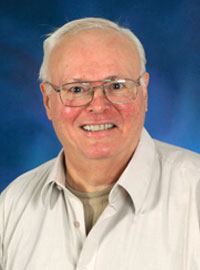About This Webinar
Post-webinar notes
Additional questions and answers
Q: Have you tried using solid state Si APD or SiPM instead of PMT in your CD Radiometer or two photon spectroscopy?
A: No, used S- 20 928 PMT and CMOS Si camera . Did use Si avalanche detectors .
Q: During the diagnostic mode have you experienced any viral or bacterial tissue artifacts that are photoactivated and therefore affect follow on diagnostic procedure that is different from the initial diagnostic affecting reproducibility accuracy?
A: Bacteria induce a red emission from porphyrins. If tissue lay around there is a porphyrins emission in about 600-640 nm. This occurs with dental decay in teeth. There is red emission from cavities.
Q: I believe your lambda spectrum window for Trypto falls off dramatically below 340 nm, and is that pulsed or CW light?
A: CW lamp.
Q: Have you experimented with a monochromatic high spectral intensity CW source below 300 nm?
A: Tryptophan absorption peaks at 280 nm and emits at 340 nm.
Q: Have you worked with co-linear beams for diagnostic and therapeutics in a concurrent or sequential dual modality protocol?
A: No. We proposed treatment in many proposals using RF, lasers.
Q: What emission wavelengths were fluorescence images of CIN1-3 shown in for spatial frequency analyses?
A: The images are from stains.
Q: What cancer showed differences for benign versus malignant in fluorescence ratio?
A: A lot, e.g. breast, cervix, lung , colon, oral, bladder.
Q: Do you think the recently developped CARS/SRS a very promising technique for biomedicine?
A: Yes, CARS has four-wave non-resonant background while SRS does not since you input Raman and laser frequencies to measure the enhancement. SRS (Stimulated Raman Scattering) should be called Stimulated Raman Gain or Enhancement method.
Join us for a
FREE webinar –
Wednesday, April 9, 2014, 1 p.m. EDT / 10 a.m. PDT

Photonics Media will host
Dr. Robert R. Alfano, distinguished professor of science and engineering at The City College of the City University of New York, who will present major advances in optical biopsy and imaging spectroscopy.
Alfano will discuss the key fingerprints to detect aggressive cancer cells; two new NIR spectral windows for imaging with less scattering of light in tissue; the use of upper singlet S2 for dyes to increase imaging depth using two-photon techniques; the use of spatial frequency spectra to detect structure in cancerous tissues and the brain; and, most of all, the use of supercontinuum – the ultimate white light – in biomedicine applications.